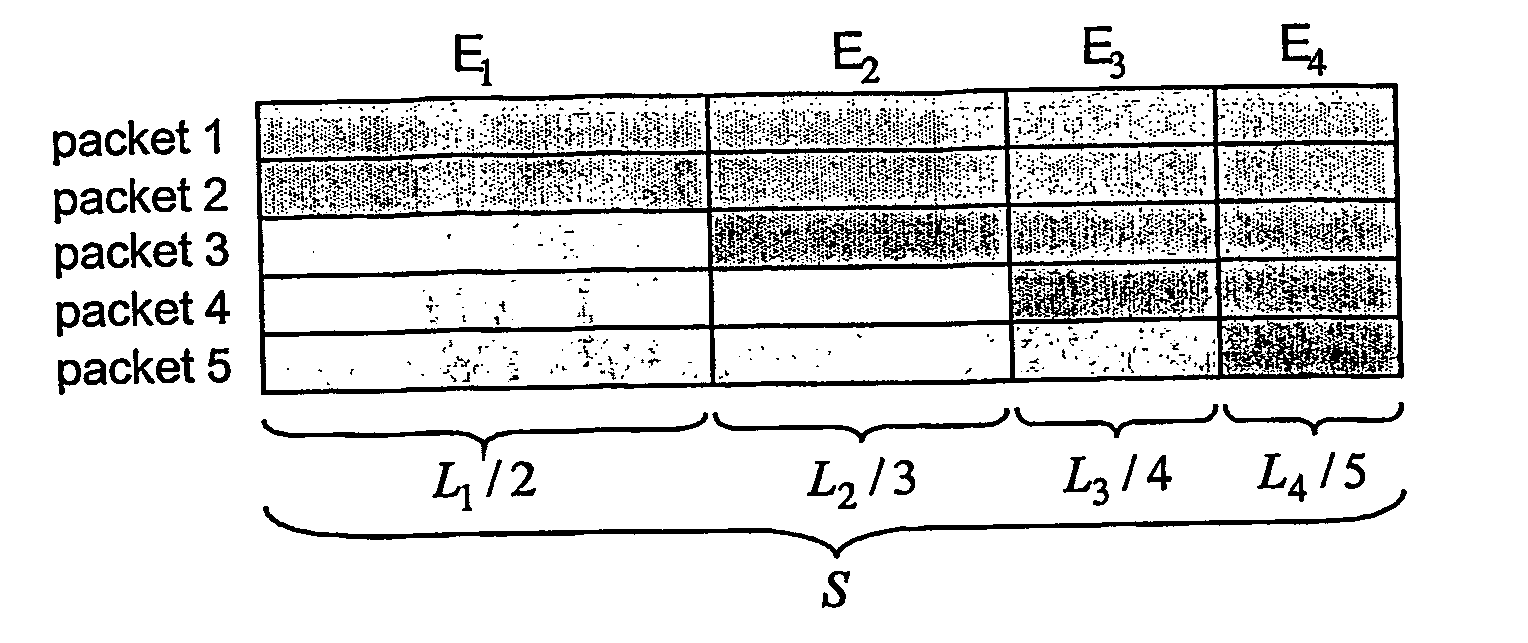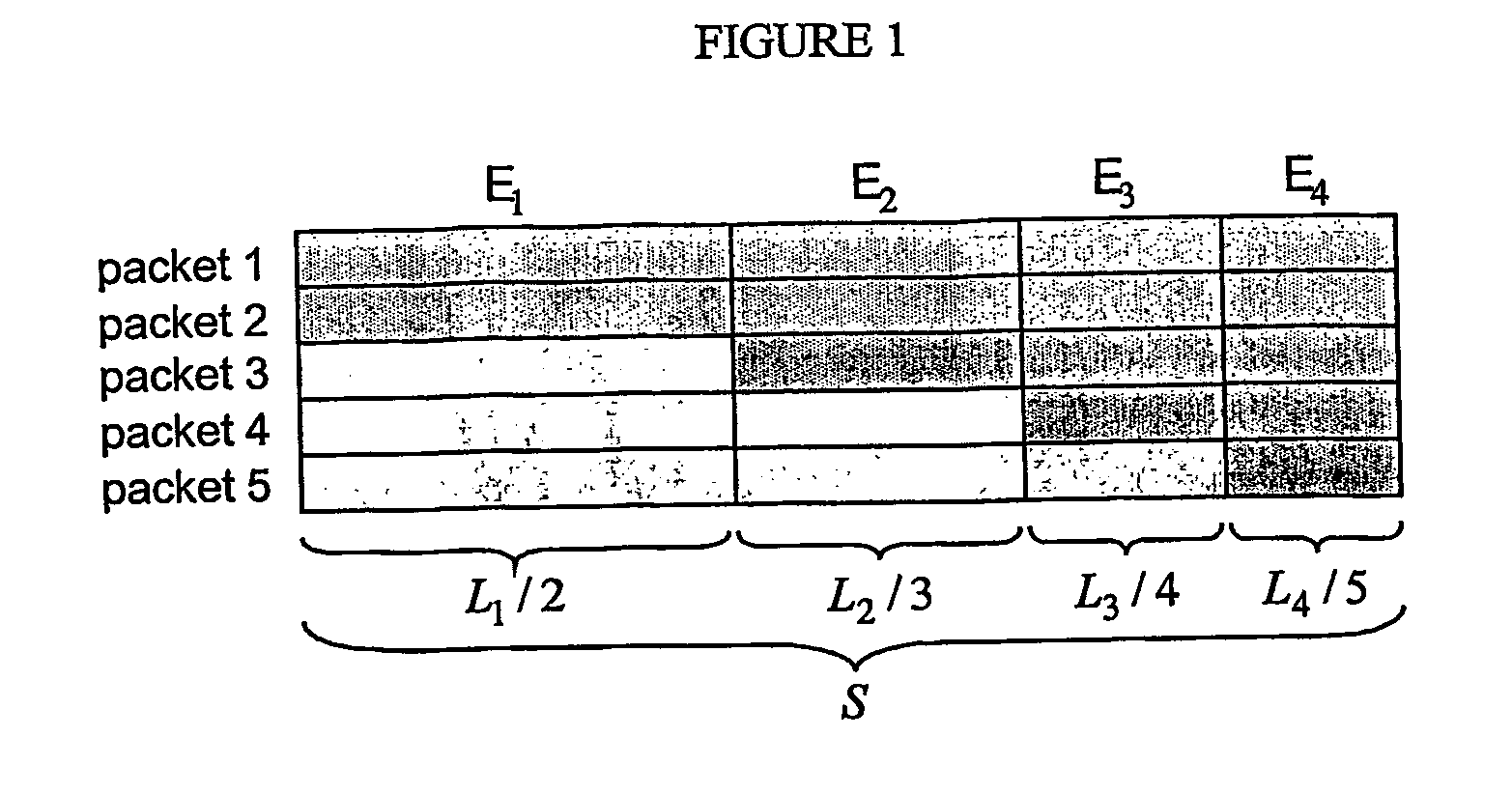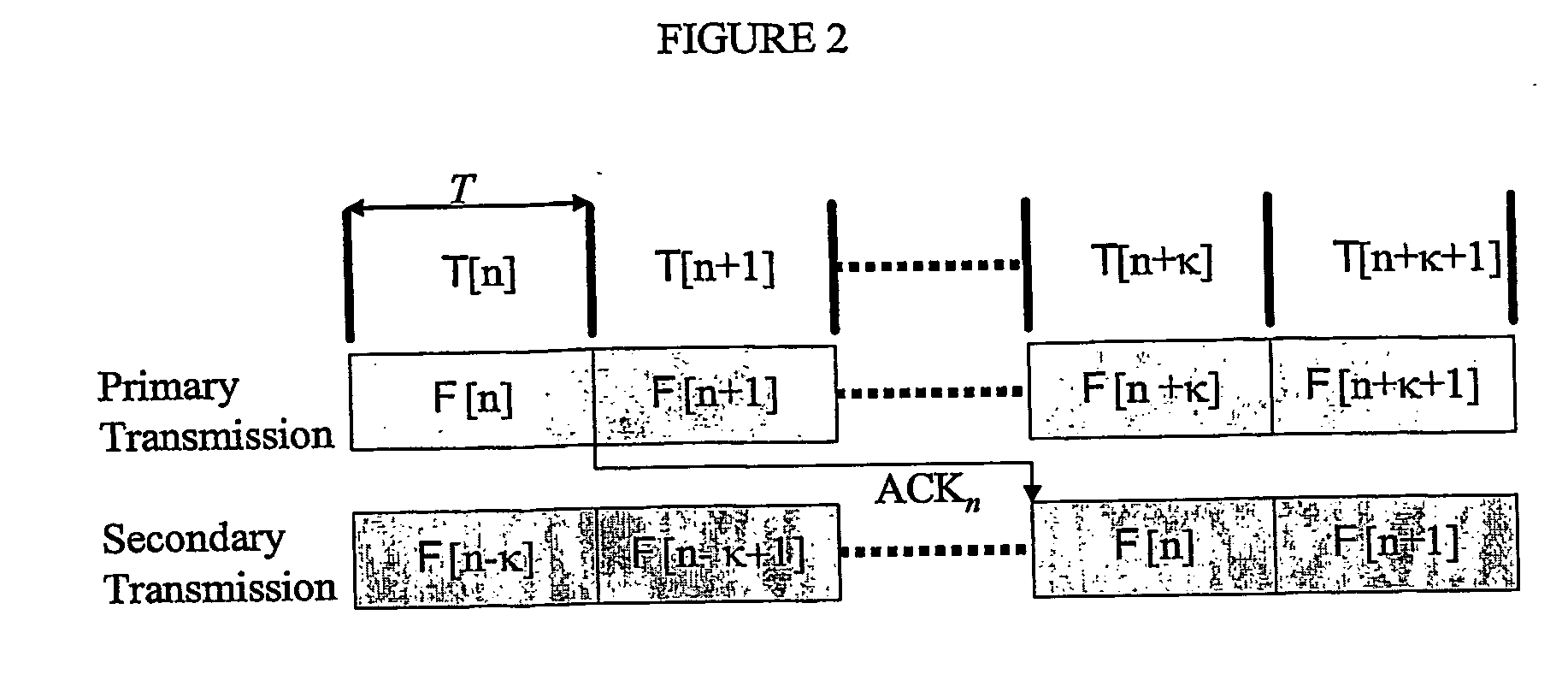Method for transmitting data over lossy packet-based communication networks
a packet-based communication network and data transmission technology, applied in the field of data transmission, can solve the problem that the retransmission of lost data may indeed not be possible, and achieve the effect of avoiding or reducing redundant retransmission
- Summary
- Abstract
- Description
- Claims
- Application Information
AI Technical Summary
Benefits of technology
Problems solved by technology
Method used
Image
Examples
Embodiment Construction
[0055] The invention is concerned with the robust transmission of streaming scalable data through lossy communication channels, for applications in which limited retransmission is possible. For explanatory purposes, the discussion which follows is limited to scalably compressed video frames. However, the invention described here can clearly be applied to the protection of other real-time media, such as audio.
Scalable Source Frames
[0056] To study the delivery of streaming scalable media in the context of limited retransmission, we model the scalable data source as a sequence of “frames”, each of which is compressed independently. Highly scalable image compression schemes have been widely investigated over the past 15 years. Some of the most notable algorithms to emerge from these efforts are the EZW [24] and SPIHT [25] algorithms, and the JPEG2000 [26] image compression standard. The latter is based on a variety of important concepts, including context-adaptive bit-plane coding [2...
PUM
 Login to View More
Login to View More Abstract
Description
Claims
Application Information
 Login to View More
Login to View More - R&D
- Intellectual Property
- Life Sciences
- Materials
- Tech Scout
- Unparalleled Data Quality
- Higher Quality Content
- 60% Fewer Hallucinations
Browse by: Latest US Patents, China's latest patents, Technical Efficacy Thesaurus, Application Domain, Technology Topic, Popular Technical Reports.
© 2025 PatSnap. All rights reserved.Legal|Privacy policy|Modern Slavery Act Transparency Statement|Sitemap|About US| Contact US: help@patsnap.com



